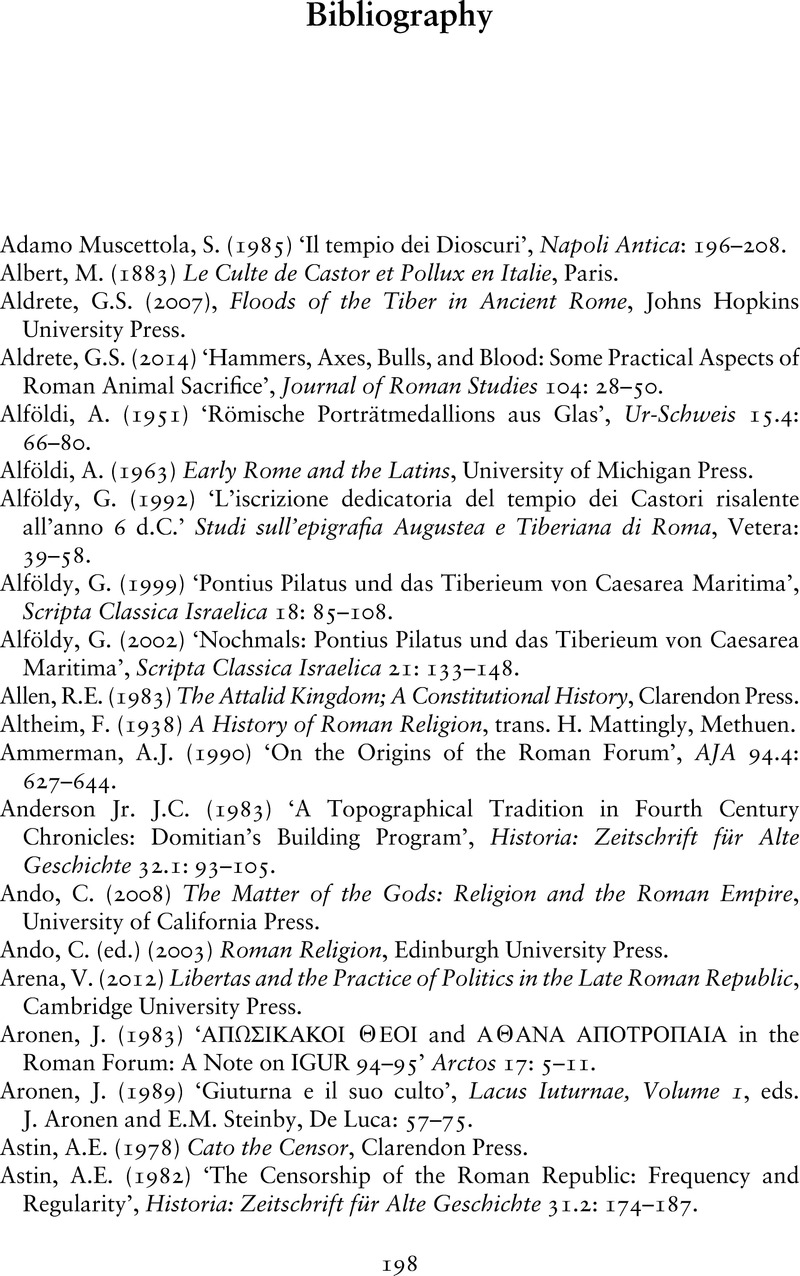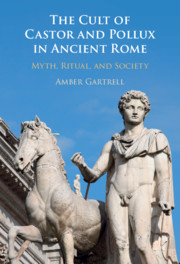Book contents
- The Cult of Castor and Pollux in Ancient Rome
- The Cult of Castor and Pollux in Ancient Rome
- Copyright page
- Contents
- Illustrations
- Translations and Abbreviations
- Acknowledgements
- Introduction
- 1 The Temples of Castor and Pollux
- 2 The Epiphanies of the Dioscuri
- 3 The Responsibilities of Castor and Pollux
- 4 Castor and Pollux as Parallels for Imperial Heirs
- Conclusion
- Bibliography
- Index
- References
Bibliography
Published online by Cambridge University Press: 08 May 2021
- The Cult of Castor and Pollux in Ancient Rome
- The Cult of Castor and Pollux in Ancient Rome
- Copyright page
- Contents
- Illustrations
- Translations and Abbreviations
- Acknowledgements
- Introduction
- 1 The Temples of Castor and Pollux
- 2 The Epiphanies of the Dioscuri
- 3 The Responsibilities of Castor and Pollux
- 4 Castor and Pollux as Parallels for Imperial Heirs
- Conclusion
- Bibliography
- Index
- References
Summary

- Type
- Chapter
- Information
- The Cult of Castor and Pollux in Ancient RomeMyth, Ritual, and Society, pp. 198 - 220Publisher: Cambridge University PressPrint publication year: 2021



